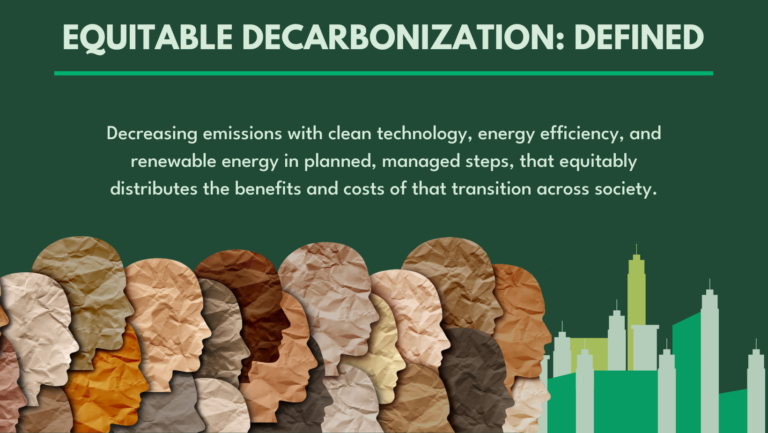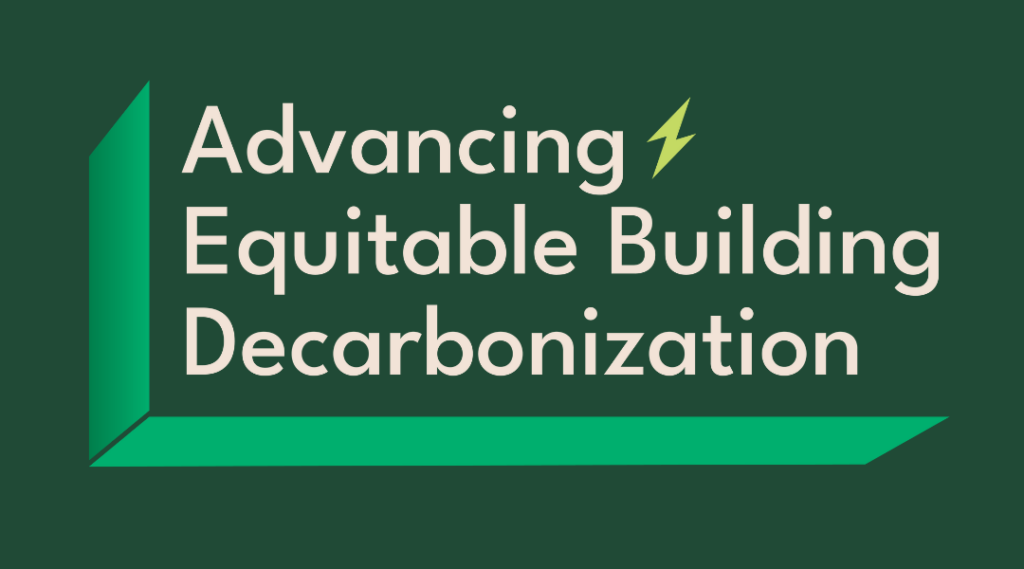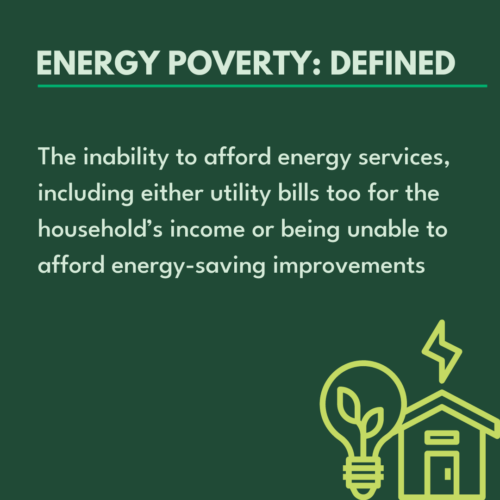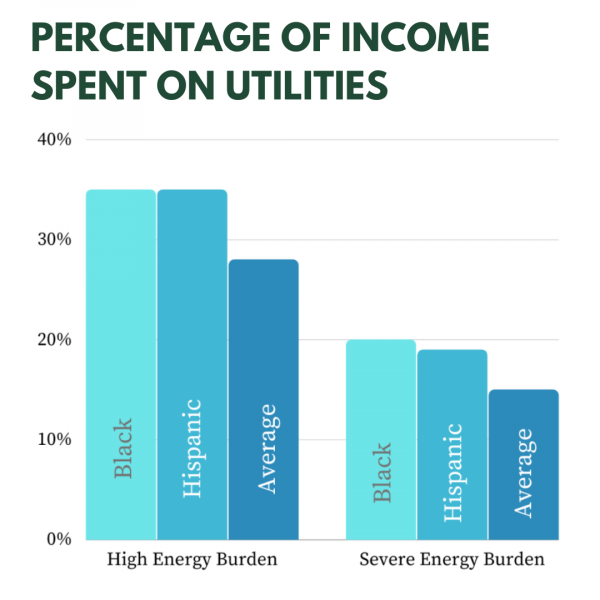What is the role of equity in building decarbonization? Centering equity in decarbonization can help mitigate the effects of climate change on frontline communities—including systemically divested communities like communities of color. These communities contribute the least amount of carbon emissions, but disproportionately experience the negative impacts of climate change in their communities.

If successful, all groups—across class, race, geography, and gender—will have equal outcomes and experience this new energy system’s economic and health benefits.
What Factors Create Inequity in Building Decarbonization?
Divested communities often need more access to technical knowledge and financial resources to make improvements that reduce carbon emissions from their buildings. Equity must, therefore, be at the center of policies and programs targeting building decarbonization.
The main problem behind current building decarbonization efforts in the U.S. is a failure to address the challenges of energy inequity. Many communities of color and low-income communities have not had access to affordable energy efficiency or have struggled with energy poverty. This is a result of racial discrimination through redlining, segregation, and income inequality in housing.
How Do We Make a More Equitable Transition to Sustainable Buildings?
In order for all people to have access to new technologies and clean energy, we must address procedural, structural, and distributional inequities. A critical piece of the process is energy equity, or the fair distribution of benefits and burdens from creating and using energy, while taking into account historical and contextual information. This includes addressing the cost of energy, promoting inclusivity in energy efficiency programs, and creating accessible, high-paying energy jobs.
Who has the Highest Energy Bills?
Communities of color and low-income communities are more likely to be affected by energy poverty:
- In 2021, one third of Americans had difficulties affording the energy needed to fuel their homes.
- In 2016, a study on energy burden showed that African American households spend 5.3% of their income on utilities. This is more than the national average of 3.5%.
Factors Leading to Inequitable Energy Efficiency Programs
While there are many programs available to help with weatherization and energy efficiency, there are barriers to some groups accessing those programs. These include people:
- In older homes, which may require expensive health or safety upgrades before energy efficiency upgrades can be done
- In multi-family homes, as there are many programs available for single-family homes, but very few available to renters or those living in multi-family apartments. Although many renters pay utility costs, landlords may be unwilling to pay the upfront costs of installing new technologies. Additionally, landlords may raise rent after making improvements.
- Living paycheck to paycheck, as homes with more efficiency also tend to have higher monthly rent
- Who are people of color, as they are more likely to rent rather than own their home
To make energy efficiency improvements equitable, programs must be accessible to everyone, include policies that are inclusive of many types of homes, and prevent displacement due to an increase in rent.
How Can We Lower Energy Bills?
Energy bills are increasing in the U.S. due to the rising costs of gas, electricity, and other types of fuel and also due to changing temperatures. The more the temperature increases or decreases outside, the higher the energy bills needed to keep inside comfortable. So, how do we reduce the energy our buildings use to combat climate change while also keeping energy bills affordable?
- Prioritize low-income families, communities of color, and other divested populations by changing the structure of utility rates
- Designing decarbonization and efficiency programs that make sure benefits and funding are distributed equitably
- Focusing on rental and multi-family housing for energy efficiency programs
- Developing financial tools such as loans, financing, and rebates for maintenance of energy efficiency upgrades (not only for the initial installation)
High-Quality Jobs are Important for Equity
A critical part of improving equity in the transition to more sustainable buildings is increasing access to high-paying jobs and opportunities in the energy sector. The transition to clean energy and more efficient programs creates new opportunities that must be accessible to everyone, especially people of color who have historically been excluded from high-paying, stable, and desirable work. Workforce development programs—like the programs of our partner organization, Power52—that train people for jobs must also be accessible, and there must be opportunities for people of color to develop and sustain their own businesses through contract work.
How is ISC Addressing Equitable Building Decarbonization?
While many programs are available for building decarbonization, more equitable solutions must be implemented to adequately support low-income and divested communities. These solutions need to consider historical and contextual factors that create barriers to sustainable and resilient buildings. Everyone needs to be included in decarbonization activities for that transition to be just and equitable.
The AEBD Project

The Institute for Sustainable Communities (ISC) recently announced the launch of a project focused on Advancing Equitable Decarbonization in Buildings Owned by People of Color (AEBD). Through three pilot cities, Oakland, CA, St. Louis, MO, and Philadelphia, PA, the project is working to implement equitable decarbonization projects by developing leadership alliances in each city. Learn more about the AEBD project.


